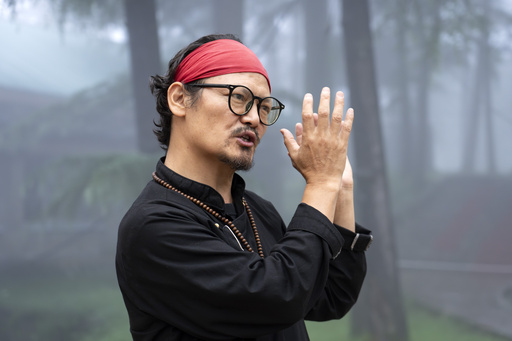In Dharamshala, India, news has surfaced about the Dalai Lama’s future intentions as he gets closer to his 90th birthday. The revered spiritual leader plans to reincarnate, thus setting the stage for identifying a successor for a tradition that has endured over 500 years. This announcement, however, hasn’t done much to calm anxieties among Tibetan Buddhists who contemplate what the future holds once he is no longer around.
For many decades, the 14th Dalai Lama has served not just as a religious figure but as a pillar sustaining a nation and community in exile. In his leadership, he has successfully maintained Tibetan culture and identity beyond its borders. Often viewed unfavorably by China, he remains a key advocate for a Tibetan homeland, celebrated and recognized internationally. His admirers include royalty, political figures, and celebrities, garnered through his peaceful advocacy and highlighted by a Nobel Peace Prize.
The Dalai Lama’s eventual passing is anticipated to plunge the global Tibetan community into years of uncertainty, given that selecting his successor requires traditional reincarnation methods, a process bound to global political dynamics. China, which has controlled Tibet since 1950, has claimed it will not accept any successor without its approval.
This raises concerns among Tibetans residing in places like Dharamshala, where the Dalai Lama has based his government-in-exile, as well as across other diasporic communities worldwide. The prospect of losing the Dalai Lama terrifies many following his legacy. “The absence of His Holiness would be a huge setback for the Tibetans,” Penpa Tsering, head of the democratically elected Tibetan government-in-exile, remarked. The task of carrying on his long-lasting legacy falls to their shoulders.
During his time as the world’s most well-known figure representing Tibetan struggles for autonomy, the Dalai Lama has guided this nation’s aspirations to gain freedom, opposing Chinese control. Though a successor remains unnamed, he has stated this individual would emerge from outside China, a so-called “free world.” Traditionally, Dalai Lamas are identified through complex and sacred religious rituals involving senior monks interpreting signs and consulting oracles to find the rightful successor. These processes take many years, and the responsibility involves educating the selected youth before they become spiritually leading figures.
Meanwhile, China has attempted to appoint its own spiritual representatives, leading to controversies. The most notable incident involves the Panchen Lama, traditionally the second most important figure in Tibetan Buddhism. In 1995, Beijing appointed Gyaltsen Norbu as the 11th Panchen Lama, dismissing the candidate previously recognized by the Dalai Lama, who subsequently vanished, fueling further contention.
Fears of losing the current Dalai Lama’s charisma and leadership qualities linger. As writer and activist Tenzin Tsundue puts it, the Dalai Lama serves as “a fulcrum, the epitome of the Tibetan movement.” Tsundue and others place hope in the organized government-in-exile, rooting their aspirations in democratic processes. They assert their demands for a homeland constitute basic human needs. These sentiments resonate in Dharamshala, where a vibrant Tibetan community of more than 20,000 operates independent institutions such as schools, hospitals, and monasteries.
China’s dismissal of the Tibetan government-in-exile persists, branding the Dalai Lama as a separatist and rejecting dialogues with his representatives. Chinese authorities have expressed that they demand the Dalai Lama’s successor be born and verified under the watchful eye of their own government, a prospect Tibetans widely disapprove of. Many regard Beijing’s moves as part of an agenda to tighten control over Tibetan religious and cultural affairs.
In the global arena, historical support for the Dalai Lama’s cause appears to dwindle as countries prioritize relations with China. Over the years, various governments recognized the Dalai Lama’s movement through financial support and prestigious honors, yet some commentators note growing hesitance due to China’s economic allure. Tsundue suggests that while past allyships were beneficial, geopolitical circumstances have increasingly put Tibet in the backseat. He asserts that the situation leaves many aspects of Tibet’s future reliant on the Tibetan community themselves and their capacity to evade radical responses.
Underpinning these challenges remains the Dalai Lama’s “Middle Way” approach, advocating for nonviolent autonomy within China’s sovereignty. With questions looming over succession, some anticipate a potential shift in strategy. How the new Dalai Lama might engage with Beijing is uncertain, but leaders in exile emphasize the importance of continuity. However, they recognize the risk that the Dalai Lama’s eventual passing could cause instability within Tibet itself, fuelling further unrest. Tsering expresses a fervent hope that Tibet remains peaceable, noting the dire consequences of any turn towards violence as past self-immolation protests have shown.


